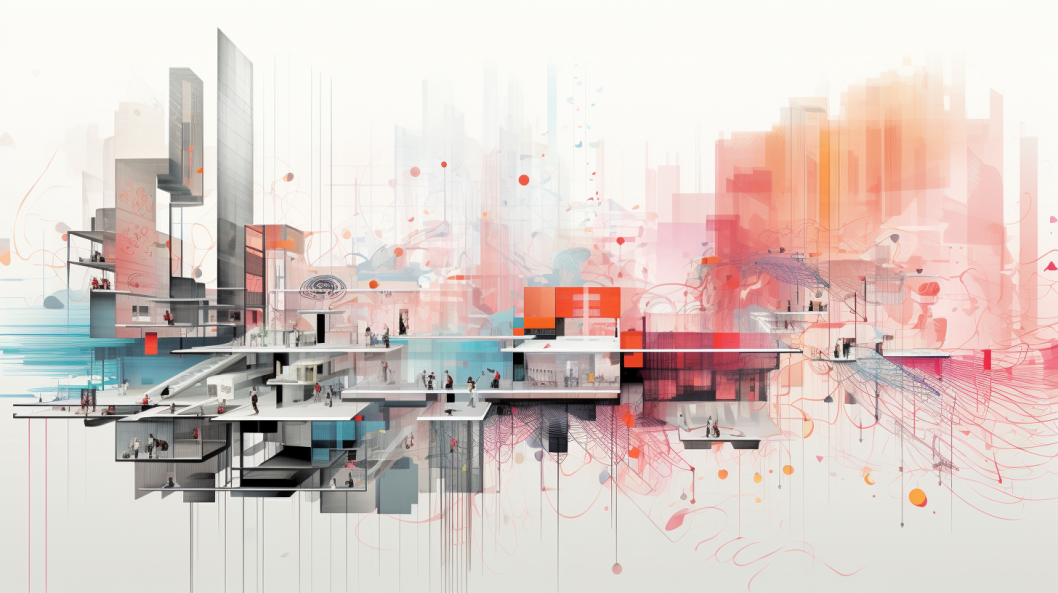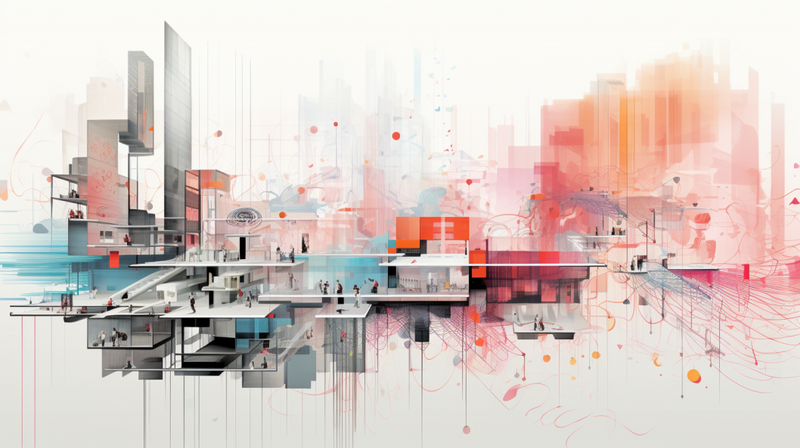As the silhouette of a building eclipses the horizon, its structure speaks not just to the materials from which it is built, but also to the design processes behind its inception. Algorithmic architecture represents the nexus where computational algorithms and architectural design intertwine, prompting a reshaping of our built environment. This integration is burgeoning as architects harness the potency of coding to ideate, optimize, and realize innovative designs that were once considered impractical, if not impossible. This article explores the rising influence of algorithmic methodologies in architectural practice and ponders upon the future of design processes in an increasingly digitized realm.

Bridging Algorithms and Architecture
Algorithms, essentially a set of rules or instructions aimed at solving problems, are permeating architectural design, offering unprecedented precision, efficiency, and innovative potentials. The algorithmic architecture involves employing coding and computational strategies to assist in the formation, analysis, and optimization of design concepts. With parameters that can be manipulated to alter outcomes, architects now have a potent tool that enables a more explorative and iterative design process.
In the realm of design development, computational algorithms allow architects to delve into a myriad of permutations and combinations of designs, surfaces, and forms, which would be overwhelmingly complex and time-consuming through conventional methods. Coding augments architects with the ability to scrutinize and select designs, synthesizing aesthetics, functionality, and structural integrity with an efficiency that is exponentially enhanced.

Parametric Design: An Algorithmic Prodigy
Parametric design, a progeny of algorithmic architecture, employs algorithms to enable the creation of forms based on mathematical rules and equations. The parameters, once defined, allow designers to manipulate and transform the output by altering the input values. This design methodology allows architects to explore multiple design iterations, swiftly making adjustments in response to changing requirements or optimizing solutions to meet specific objectives.
Through parametric design, architects can engage in a more dynamic and interactive design process, where every modification reverberates through all aspects of the design, maintaining coherence and coordination throughout the development phases. This implies that complex geometric forms, adaptive materials usage, and responsiveness to environmental factors can be seamlessly integrated into the architectural narrative, crafting buildings that are not only visually compelling but also environmentally attuned and resource-efficient.
Challenges and Ethical Considerations
As with any technological integration, the embracing of algorithmic architecture does not come without its challenges and ethical considerations. The question of accessibility and the digital divide among architects of varying resources and competencies surfaces, risking the further marginalization of those who are technologically disenfranchised.
Moreover, as algorithms take a center stage in design decision-making, the potential loss of the intuitive and inherently human aspect of design becomes a topic worthy of reflection. Can algorithmic precision and the unpredictability of creative intuition coalesce without compromising each other? Furthermore, as algorithms dictate structural forms and usage of space, ensuring they do so without entrenching biases or reducing inclusivity is pivotal.

A Glimpse Into the Future: Adaptive and Autonomous Buildings
Looking ahead, the algorithmic architecture possesses the potential to disrupt traditional architectural practices, erecting structures that are not just designed for their users but also evolve with them. Imagine buildings that autonomously adapt to environmental changes, self-optimize for energy efficiency, or reconfigure spaces to cater to the varying needs of their inhabitants. Coding could enable the creation of ‘living’ structures, which interact, learn, and morph, providing solutions that are perpetually optimized and contemporaneously relevant.
The augmenting of architectural practices with algorithms also opens vistas towards collaborative interdisciplinary work. Here, various fields such as environmental science, materials engineering, artificial intelligence, and more can symbiotically merge with architecture, fostering the emergence of designs that are holistic, sustainable, and innately intelligent.
As algorithms become ingrained within the architectural design process, we stand at the cusp of a future where buildings are not merely static entities but dynamic structures capable of adaptation, evolution, and interaction. Algorithmic architecture beckons a future where buildings are conceived through a seamless amalgamation of computational prowess and human creativity, engendering spaces that resonate with both logical precision and imaginative exuberance.
The journey ahead for algorithmic architecture invites architects, designers, and the wider community to engage in an ongoing dialogue, ensuring that as we forge ahead, the built environments conceived are not only a testament to technological advancement but also reflect our collective ethics, aspirations, and innate human essence.

